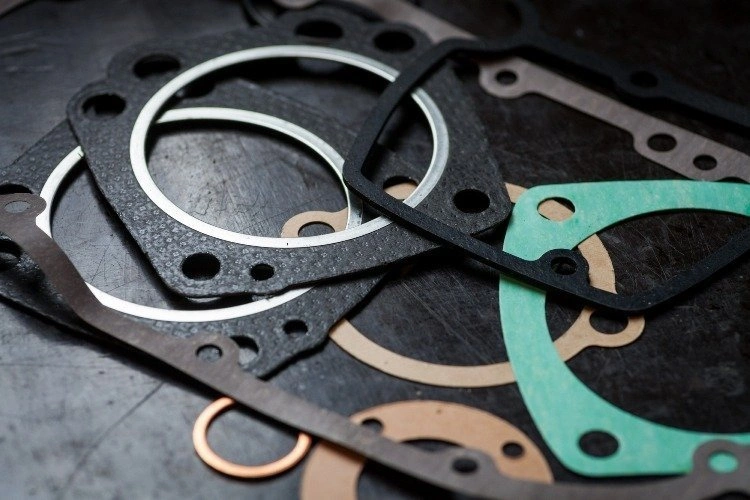Gaskets come in a range of different shapes and sizes. All are offering similar functionality; Gaskets are produced using a range of different materials to suit a range and a variety of environmental factors, industrial uses, and product requirements.
When it comes to two of the most popular types of Gaskets, spiral wound Gaskets and sheets Gaskets, there are some key differences to note.
Which one you opt for of course depends on a range of different factors, your requirements and where and how the gasket is to be used.
Difference between spiral wound Gaskets and sheet Gaskets
Sheet Gaskets, in their simplest form, is when a sheet of material has the gasket shape “punched out” of it. The manufactured material can be made to different grades as well as thickness and materials used include rubber, paper, cork, non-asbestos materials, and graphite.
Alternatively, spiral wound Gaskets are constructed by winding the metal and filler together, with the filler providing the sealing capability and the metal providing the strength.
At WEITEN, we can provide you with both spiral wound Gaskets and sheet Gaskets, as well as providing bespoke gasket materials if a more customised approach is needed.

But which gasket is best?
This is entirely dependent on what that gasket is being used for and how ultimately it is being used.
Gaskets and spiral wound Gaskets play an essential role across a number of different products and most importantly across several different industry sectors too.
Taking it back to the basics, ultimately Gaskets are thin rings that act as seals between two surfaces. Helping with padding, leak prevention, mounting, vibration minimisation, and also, and in some cases, most importantly, helping to protect against environmental contaminants.
Due to their various uses, it’s essential to choose the right gasket for you. Knowing the difference between spiral wound Gaskets and sheet Gaskets is a great start!
At WEITEN, our team of gasket experts is always on hand to provide information and advice, offering the best technical help and support where we can.
Below, we’ve pulled together some of the key differences and benefits to sheet Gaskets and spiral wound Gaskets so you can make a more informed decision.
Benefits of Spiral Wound Gaskets
They’re reliable. Due to the nature of how they are constructed, spiral wound Gaskets are one of the most reliable gasket types across many different work environments.
They require less clamping forces than sheet Gaskets, so receive less overall wear and tear during the manufacturing and installation process.
They’re strong and durable so help avoid early product life failure and costs associated with this.
They can work in high temperature, corrosive, and high-pressure situations.
Can withstand fluctuations in pressure and temperature.
Generally, round in shape but can be customised to suit.
Benefits of Sheet Gaskets
They’re affordable as they can be mass-produced.
They can be produced quickly.
They can fulfil chemical operation requirements.
Certification and traceable certification can be supplied with your chosen material.
Ultimately Gaskets, for all small in size and looking like a simple flat disc with the centre ring punched out, should not be underestimated.
Gaskets play a big part in the industrial world. Providing the cushioning element where different parts come to join together. Preventing leaks and hazards from occurring. Gaskets can also store energy between pieces making mechanical operations, possible.
If you’re interested to find out more about the different types of Gaskets and the difference between spiral wound and sheet Gaskets, call the, we’d be happy to help.
Contact us at gasket@weitengroup.com or visit our website www.weitengroup.com to explore our range of gasket Sheet.